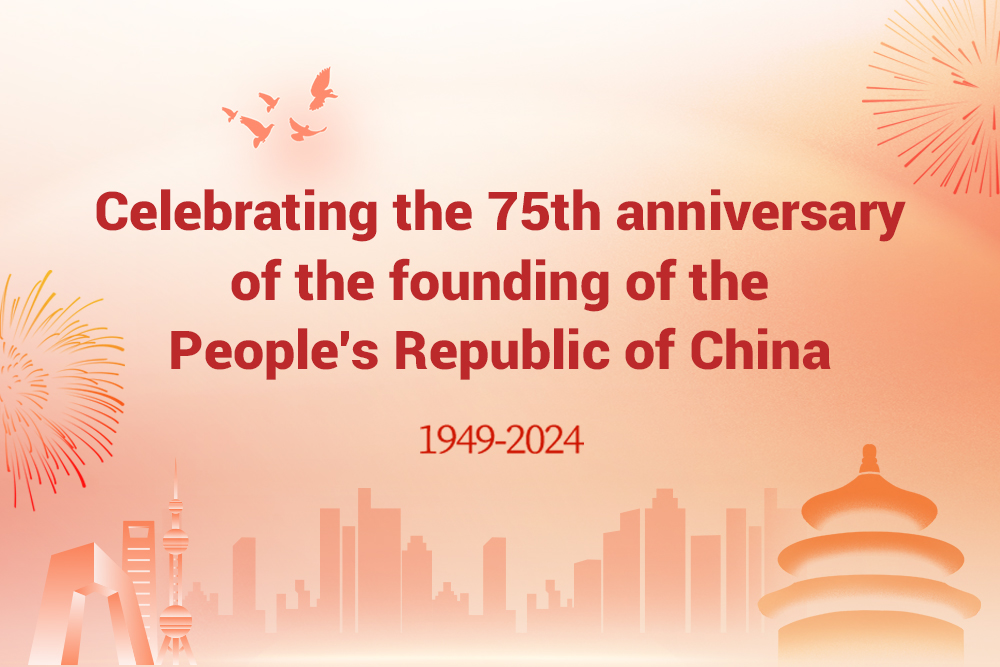What are we talking about when we talk about plants in classical Chinese gardens?

China has a long history and splendid culture. The art of traditional Chinese garden also has a long history and exhibits elegant taste. As an art, it carries the rich traditional Chinese culture. As a physical carrier, the ambience of the garden takes you down the emotional lane, the styling connects with your image perception, and the symbolic meaning offers you cognitive association. This article focuses on the cultural connotations of plants in classical Chinese gardens.
1.Emotional Carrier
In the traditional Chinese garden culture, flowers and trees are the carriers of rich cultural information, as well as media often used by people to express certain ideas. For example, pine, bamboo, and plum are called the "three friends in cold weather". They symbolize loyalty and friendship, even in the coldest days, and are also used to describe the strong personality that can stand the test of harsh weather. Pine trees are vigorous, quaint, and not afraid of frost and harsh environment. They stand in the cold on top of a mountain, with noble and unyielding character. Confucius said the famous motto: "When the year turns cold, pines and cypresses reveal their persistent green." Poet Li Bai praised them: "The pines and cypresses are strong and independent, unlike the adorable peaches and plums." Bamboo is appreciated by the "three religions", and carries deep cultural meanings. "The bamboo has integrity even before it rises, and stays modest even when it grows high." That is why bamboo is regarded as the gentleman of integrity among plants. No wonder the great poet Su Shi said: "It is better to eat without meat than to live without bamboo." Garden attractions such as "bamboo path leading to a quiet place" are among the most commonly used. To live in a house surrounded by bamboos is one of the best things for an ancient Chinese litterateur. Plum tree is one of the most favorite plants for the Chinese people. Plum has an upright, noble, elegant and chic character. Lu You praised its humility, dedication and strong will in his poem: "The plum will not compete with other flowers in spring, and let those flowers envy each other." In the same poem, he praised the nobility, grace and love for itself: "Ground to dust and scattered into the mud, her fragrance is still the same." A forest of plum flowers forms a beautiful landscape of fragrance, like a sea of snow, and therefore many places are named after the plum. These attractions include Plum Flower Mountain, Plum Ridge, Plum Cove and Fragrance Snow Pavilion. Besides, plum, orchid, bamboo and chrysanthemum are the "four gentlemen". Orchard is considered the most elegant one. "It has fragrance and its color is not too bright." Zhang Yu from Ming Dynasty said in a poem: "The orchid can be white and yellow, blossoming even with no one watching. The center of the flower is small but it can hold a lot of fragrance." Zheng Tun from Qing Dynasty said in a poem: "There are many orchids lining ahead, and the mountain means much. The flower remains loyal to itself and needs not compete with others." Orchid is considered to have luxurious and soft green leaves. It is neither weak nor flashy, with the best light fragrance that spreads far away, which is the definition of elegance itself. Chrysanthemum resists cold weather and blossoms in the late autumn. There are thousands of kinds of chrysanthemum, such as Dali chrysanthemum, cliff-side chrysanthemum, cutting chrysanthemum, ground-covering chrysanthemum, each with its own use. Tao Yuanming wrote in a poem: "Chrysanthemums blossom and shine in the woods; green pines are lining on the rocks. The flower can be considered a hero standing straight even when covered with frost." The poem praised the flower's gentleman-like character in resisting the hostile environment of wind and frost. Lotus is regarded to "come out of dirty mud and remain unsoiled, not flattering or intended to please others". Cinnamon flower in Li Qingzhao's mind is more elegant. "The light yellow cinnamon flower stays hidden in quiet place, giving off only its fragrance. It does not need the red and green colors to be the best flower in autumn. The poet Qu Yuan had no feeling for it, otherwise why did he not write about it in his works?" The graceful plum flower would envy the cinnamon flower. The elegant chrysanthemum would feel ashamed by it. That is why cinnamon flower is a noble flower.
2.Cultural and Auspicious Symbols
Pine and cypress are the symbol of longevity and of having numerous descendants. The plum flowers have five petals, representing the "five kinds of happiness", making it one of the auspicious patterns found in garden floors. In Chinese, the word "plum" spells the same as the word "eyebrows", and the pattern of a magpie (a symbol of happiness) standing on the plum branch means happiness can be seen on one's eyebrows. This is the reason why this pattern is extensively used on the floor-to-ceiling sculptures to create a happy and auspicious atmosphere. Bamboo is the symbol of spring. Yangzhou's Geyuan Garden ("Individual Garden") was built under the theme of bamboo. The Chinese character for "individual" (个) writes just like a combination of three bamboo leaves. And the garden takes only one individual bamboo to stress bamboo's independence and self-appreciation. Bamboo is also the symbol of abundant posterity. And it is also the symbol of Buddhist doctrine. Lotus is the symbol of Buddhism, and is considered to be a sacred and pure object in the land of the Buddhist, representing wisdom and purity. Phoenix tree is associated with phoenix in the Book of Songs. This tree will attract the phoenix, and therefore it is a sacred and graceful plant. The "Wu" in Chinese name "Wutong" for the phoenix tree sounds like the character for "together". Therefore, the phoenix tree often appears together with other objects such as magpie, which means "happy together". Peony is also called the "flower of wealth" as it is the symbol of wealth and prosperity. Peony and hibiscus, or peony and periwinkle, represent "long-time wealth"; peony and begonia are the symbol of "honor and distinction for a family"; peony and peach represent "longevity, wealth and honor"; peony and daffodil mean "wealthy and immortal"; peony, pine tree and rock symbolize "wealth, honor and longevity" respectively, and peony is often painted along with chrysanthemum and plum flowers representing the four seasons, where peony represents spring. Chinese rose is the "queen" of flowers. It has bright color and blossoms every month, which is a good symbol of everlasting youth. A Chinese rose in a bottle (symbol of safety) means being safe during the four seasons. Begonia becomes the symbol of the spring. Where there is begonia, there is the feeling of springtime. Chrysanthemum is the "hermit" of all flowers. "Tao's Chrysanthemum" symbolizes Tao Yuanming's unyielding character because he would not bow in return for the official salary. The beautiful willow represents many things in Chinese culture. First, it can adapt to the environment, making it a symbol of resilience. The Chinese word for "willow" spells the same as the verb "to stay", and therefore this tree has become a carrier of emotion and attachment. And there is a custom of taking a branch of willow when someone is bidding farewell to their friends. Willow is also a symbol of family and hometown. Rhododendron is the beauty of all flowers and the emotional sustenance as one misses their hometown and mother. Cinnamon flower is called "immortal friend" and "immortal visitor". It is always associated with the imperial civil examinations and the saying "plucking cinnamon flowers in the Palace of the Moon" means to win the laurels in the examinations. Orchid symbolizes friendship. Words with the same meaning spoken by different individuals are called "orchid words", and the act of swearing to be brothers is called the "bonding of golden orchids". The shape of the bauhinia leaf looks like that of a heart, so the flower is used to symbolize united heart and unity. Pomegranate means many children. Olive symbolizes peace. Crape myrtle and beech tree symbolize officials and noblemen. Day lily means forgetting your worries. Chinese wolfberry and catalpa represent capable people. Chinese white poplar symbolizes tenacity and hard working. Firethorn represents justice and righteousness. Sweet crabapple symbolizes capable officials. And there are many more examples.
3.Ancient Trees—Witness of History
Ancient trees refer to trees that are over 100 years old. Famous trees are those with significant social influence and are renowned throughout the world. Many of them are also over 100 years old. Ancient and famous trees have irreplaceable values as historical relics. The word "ancient" means they have a cultural character. They are the accumulation of history and culture, as well as living cultural relics found in gardens. This cultural character of antiquity is often considered a symbol of a nation and a country. Ancient trees over 100 years old are in a slow-growing period. The diameter of the stem increases very slowly, and the overall shape of the tree conjures up an image of antiquity and having experienced years of wind and frost. Trees in the world that can live for a long time include pines, cypresses, oaks, cedars, banyans, locust trees, ginkgoes, etc. Famous trees are famous because they often have strange shapes, thus their value of appreciation, like the "guests welcoming pine" in Huangshan Mountain in China. Those trees can be famous because of historical events, like the Han Cypress in the Dai Temple in Mount Taishan, which was planted by Liu Che or Emperor Wu of Han, who worshiped heaven and earth. Trees can also be famous due to folklore and anecdotes, like the cypress in the Xuanyuan Temple in Huangling County of Shaanxi, which is said to have been planted by Xuanyuan or the Yellow Emperor, the original legendary ancestor of the Chinese nation. The tree is almost 20 meters high, and the circumference near the bottom is 10 meters, making it the largest cypress in China. The gingko in Tanze Temple in Beijing (the "Emperor Gingko"), which is over 30 meters high and four meters in diameter, is said to have been planted during the Liao Dynasty. Many ancient and famous trees have witnessed the change of dynasties, the joy and sorrow of the people, and the vicissitudes of the world. We can write descriptions for those trees to impart historical knowledge. Ancient and famous trees add to the beauty and value of culture and art. They were a source of inspiration and the theme of poetry and painting for scholars and artists in the past, and there are many beautiful legends and amazing stories around the trees. Ancient and famous trees are also scenic spots and historical sites, like the "Couching Dragon Pine" in Jietai Temple in Beijing. Its branches are hard and twisted, like a flying dragon, which gives it a sense of beauty. Therefore, ancient and famous trees can not only take people back in time and allow them to think of the past, but also create aesthetic beauty as people appreciate them. The spiritual and cultural connotations of classical Chinese gardens reflect the spiritual world and emotional pursuit of Chinese scholars and public. This kind of survival wisdom, artistic culture environment and poetic life becomes part of the treasure of culture and art in our times, as well as the most valuable resource in modern landscape design.
- Leaders of countries send congratulations on PRC's 75th founding anniversary
- Chinese naval ships open to public tours during National Day holiday
- Top leaders of Russia, DPRK, Vietnam, Laos, Cuba send congratulations on PRC's 75th founding anniversary
- Beijing Railway Station celebrates National Day
- Elliot's exploration of Confucius cultural festival
- International NEV rally concluded in Anhui





































